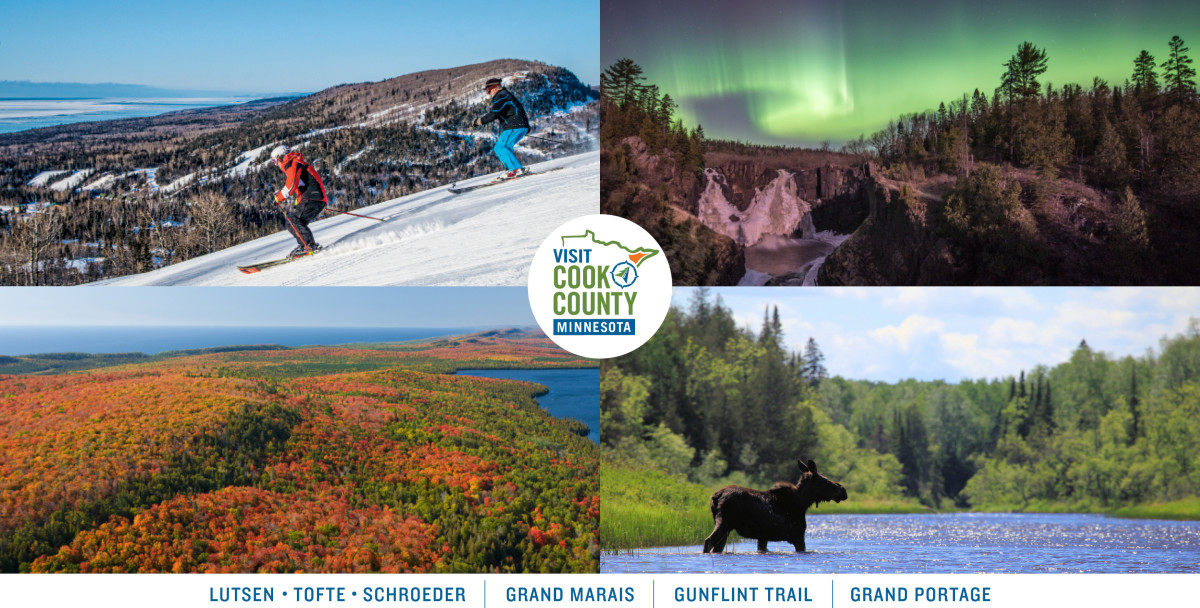Earlier this week, BBER director Monica Haynes was asked to present to the Cook County Chamber of Commerce on tourism trends in the county and the northeast region of the state and to provide an outlook on what the tourism industry might expect in the coming months and years. This post summarizes some of the key points from her presentation as well as her thoughts on what it means for the tourism industry in northeast Minnesota overall.
Since March 2020, the popular media narrative has been that the tourism industry has been devastated by the COVID-19 pandemic. That has definitely been the case in many tourism-related industries throughout the country. According to the IBISWorld industry report on the tourism industry in the U.S., industry revenue is not expected to reach pre-pandemic levels until 2025.
But it should be noted that in many parts of the country, including much of the northeast region, the pandemic actually had the opposite effect. According to the Cook County Chamber of Commerce, “In the early days of the pandemic, Cook County suffered a dramatic fall-off in its hospitality-dominated economy. But then as summer got underway in 2020, an amazing thing happened: Business boomed, the number of visitors skyrocketed, [hotel] beds were full, restaurants were swamped, and hardware and gifts and groceries were flying off the shelves.”
Lodging tax estimates for the county for the years 2013 to 2021 supported the Chamber’s sentiment on the growth of hotel stays. According to Figure 1, COVID-19 did not appear to have any negative impact on lodging tax revenues whatsoever. In fact, 2021 lodging tax revenues reached nearly $1.7 million county-wide, an increase of more than 30% over pre-pandemic levels.
Source: Cook County Chamber of Commerce
In 2021, Explore Minnesota Tourism conducted surveys of businesses in the tourism industry to gauge how COVID-19 had impacted their operations and what the businesses expected in the coming months. According to Explore Minnesota Tourism’s findings, the extent to which the industry has recovered depends much on which part of the state businesses were located. Roughly half of those businesses located in the Metro and southern Minnesota reported revenues at or above 2019, compared with 76% of the businesses located in central and northeast Minnesota, and 92% of businesses in northwest Minnesota (see Figure 2). It is notable that 39% of tourism-related businesses in northeast Minnesota reported fall revenues that were “significantly higher” than the same period in 2019.
Source: Explore Minnesota Business Conditions Survey Fall 2021
Explore Minnesota’s Winter Traveler Survey also had positive feedback for tourism in the northeast region. According to the survey, people are ready and willing to travel in the next six months, and the northeast part of the state is the most popular destination among Minnesota travelers. Roughly half of those surveyed (49%) named the northeast region as the area they planned to visit, compared with 37% for the Metro area, and less than 30% elsewhere in the state. It should be noted that most travelers expect COVID-19 protocols to be in place at their destinations (e.g. masking) and expect pre-pandemic levels of customer service, quality, and pricing.
While it is impossible to predict what is in store for the tourism industry, considering all of the unknown variables currently at play (inflation, labor shortages, COVID), national forecasts suggest that the tourism industry will continue to recover. The U.S. Travel Association Forecast (Fall 2021) predicts that the industry will surpass 2019 levels in 2022 and continue to grow through 2025 due to increasing shares of consumer spending on services, including travel.
There are, however, some national trends that may prove to be challenging for our region. For example, since the start of the pandemic, many families have been substituting domestic travel for international, and car travel for air. If COVID-19 begins to wane and travelers begin to return to their prior habits, areas like Cook County and northeast Minnesota may see a decline in visitors.
In conclusion, the tourism industry appears to be strong in northeast Minnesota, despite a rocky recovery in many other parts of the state. And national forecasts suggest that tourism is set to see strong growth in the coming years.
However, when a representative at the Federal Reserve Bank of Minneapolis was asked about their prediction for the future of tourism in the Ninth District, they responded, “If you can tell me whether there are additional COVID variants on the horizon, how many, how contagious, and how damaging to individuals, then I might have a way to guess. But without that information, projections beyond 1 to 3 months are a fool’s game.”
